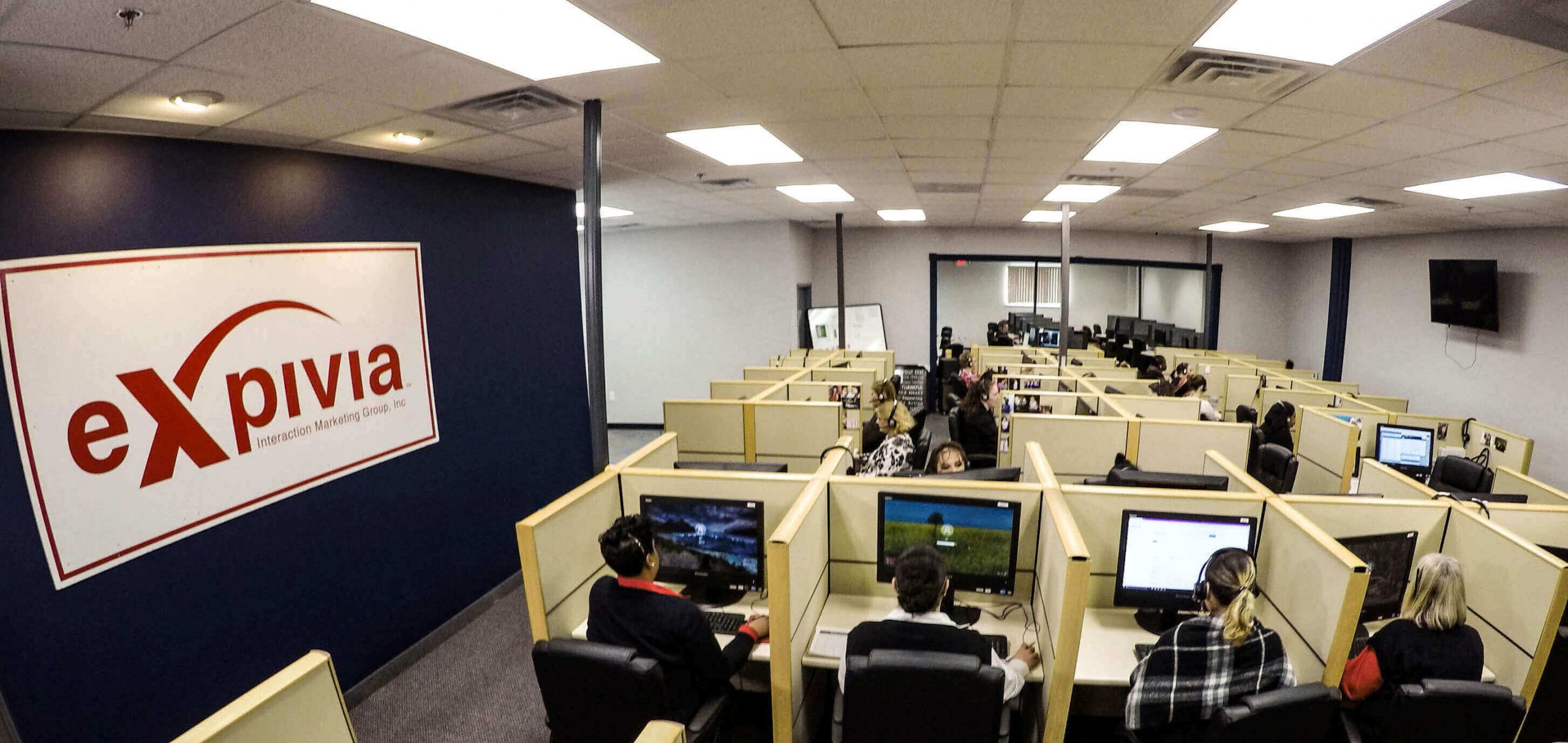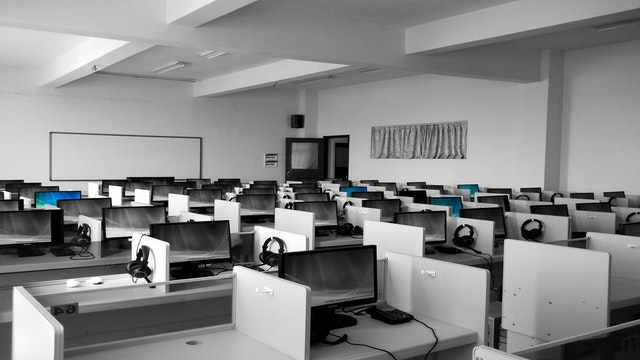12 Steps to Set Up Your Call Center Floor Right

Setting up your call center floor is no small feat. You need to think about the operation of your contact center and take everything into account to create a productive and welcoming environment for your employees. If they’re uncomfortable working on your call center floor, their work will reflect that.
The following 12 steps are our golden rules for setting up a call center floor correctly. They’re based on decades of experience at Expivia, so we know what works best for agents. Whether you have an inhouse call center or an outsourced one, these tips will help you.
1. Divide Your Call Center Floor Into Work Areas
Of course, the first thing everybody thinks about when they hear “call center floor” is “cubicles”. At Expivia, we have two kinds of work areas for agents:
- 80% of our cubicles are 3 feet deep x 4 feet wide booths
- 20% are wider s-shaped stations for two-monitor setups
2. Dedicate a Room for Training
Your agents and managers need a space for training and general meetings. Assigning a room just for educational purposes can make your call center floor structure clear and effective.
3. Separate an Area for QA
Call center quality monitoring is crucial to run a profitable and effective call center. You need to evaluate your agents regularly, to see what their performance is and how they can improve.
Having a separate area where managers can QA calls means that they can focus on the task at hand better.
And since one-on-one agent evaluations are much more effective, having that space for meetings and discussions about performance can increase employee engagement.
4. Name All the Stations
Naming the stations on your call center floor can help everyone navigate better. With this in mind, here’s our most important advice for naming call center stations: don’t get cute.
Call the station something that is easy to recognize.
We have three call center rooms. The Main, West, and East call center. We’ve tried to get cute and name them after famous streets like Bourbon Street and Penny Lane for our different isles, but it got too confusing.
Be a little more technical when it comes to the name of your call center stations. The goal is for agents to quickly and efficiently find their stations.

5. Buy Refurbished Call Center Computers
If you’re buying brand new computers, you’re making a vastly horrible financial decision. Used, refurbished, or second-hand computers are just as effective as brand new shiny ones.
A $300-350 all-in-one monitor computer with 1 TB of memory is enough. You don’t need a lot of memory. You’re not housing tools, data, and other business essentials on the actual computers. (Most things are kept in the cloud these days.)
A good call center computer has three main feature:
- It connects to the internet
- It lasts a long time
- And it’s fast
Speed is definitely the most important feature a call center computer needs to have. Make sure you buy one that increases the productivity of your agents, not cause them a headache.
6. Invest in Good (and Comfortable) Call Center Headsets
Just like call center computers, there’s no point in splurging on call center headsets. However, it’s worth investing in good ones. (And good doesn’t have to mean expensive)
At Expivia, we’ve tried a number of different types of headsets. What works best for us costs only $23. They’re noise-canceling headsets and they last for about a year before they need to be replaced, which I think is pretty good.
7. Mount TVs/Monitors to Show Your Agents Stats and Data
TVs on the walls of your call center floor can be very beneficial. You can display statistics, company news, and KPI goals. When you’re playing call center games, TVs can be especially handy in showing scores and images.
With Intel Compute Sticks, you can connect to TVs wirelessly, making the setup of your call center floor sleek and wire-free. They’re also handy for presentations.
8. Call Center Security Policy: Don’t Hang Permanent Pictures
While personalizing one’s workspace is a lovely thought, it doesn’t work that well on a call center floor.
For one, workstations and cubicles aren’t individual. Employees switching a night or day shift share the space.
Additionally, there’s also a security issue with having pictures and other paper mementos out.
Clients appreciate paperless call centers, so information and data don’t leave the center. And pictures are also included in this call center rule.
If agents insist on hanging pictures up, you can provide them with picture frames. Anything that needs to be hung needs to be laminated. It’s important to always be vigilant about security issues like this on a call center floor.
9. No Cell Phone Policy for Security
Some call centers allow phones on the floor, others completely ban them. Of course, phones aren’t good for employee productivity. And they’re also not the best for security reasons.
However, it’s important to recognize that agents have personal lives, and keeping in touch with families during emergencies is part of life.
The best compromise is to create a specific area where reps can check their phones. However, don’t allow them on the call center floor if you want to comply with security rules. You have to be PCI compliant for financial services clients.
To ensure the call center floor phone rule, you can introduce a rule: if a cell phone is heard or seen on the floor, it’s an automatic suspension.

10. Pro-Tip: Use Whitenoise in Your Call Center
If your call center floor gets too loud, use white noise. It can block out other reps’ conversations with clients, and neutralize the noise level on the floor. Reps have given positive feedback about it.
11. The Proper Ratio for Supervisors and Agents
If you’re wondering how to schedule call center supervisors to be on the floor, use a ratio of about 16:1. For more intensive programs, 10:1 may be more suitable.
How you schedule supervisors matters for your call center floor setup. Placing supervisor stations at the end of your cubicle rows can help your agents find them faster.
What is your contact center floor like?
Feel free to add your questions, ideas, and suggestions in the comments!



